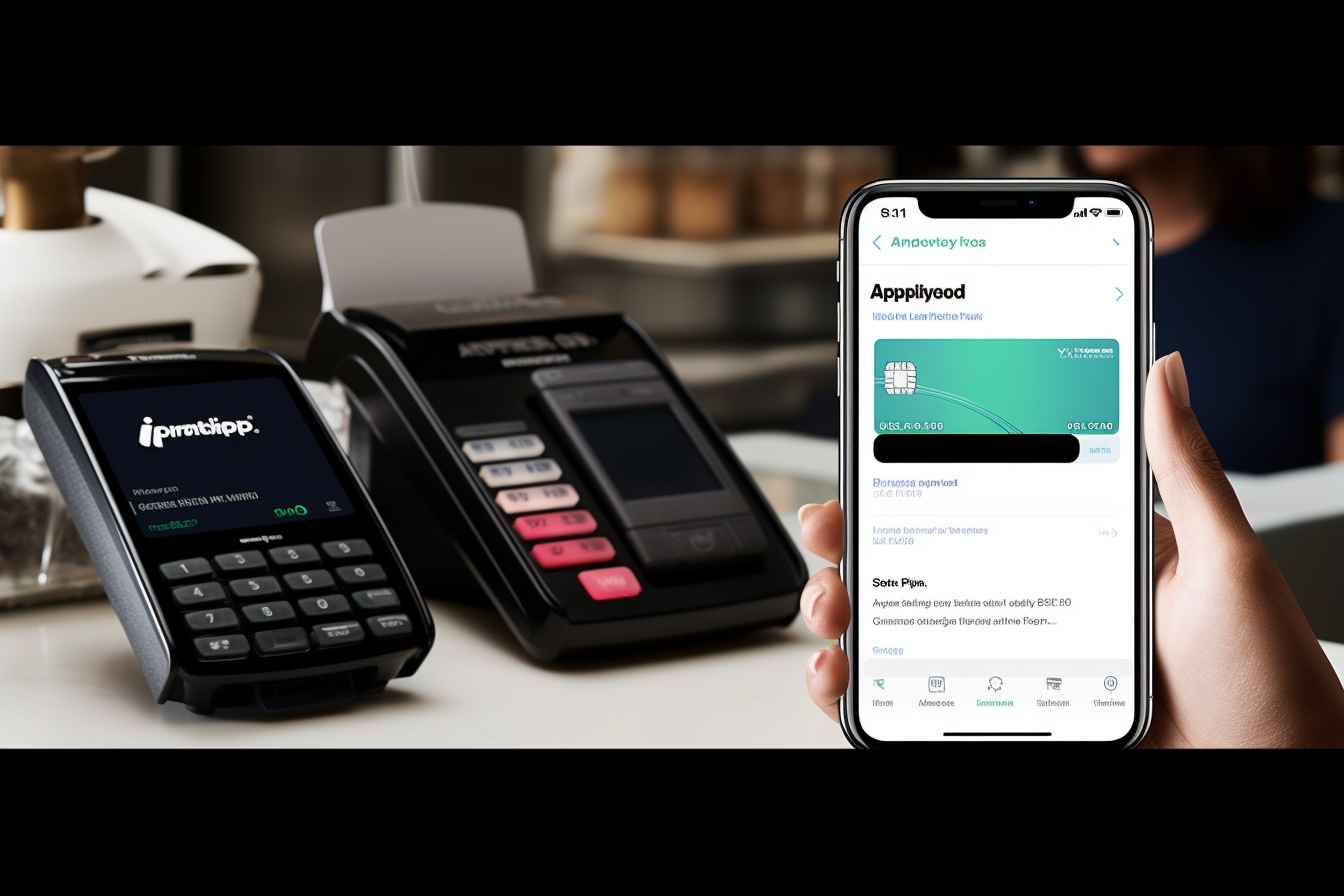Introduction
Afterpay, the popular “buy now, pay later” service, has revolutionized the way consumers make purchases in the digital age. With its flexible payment options and seamless integration into online shopping platforms, Afterpay has quickly become a household name in the world of e-commerce. This article explores the origins of Afterpay, its innovative business model, and its impact on the retail industry.
Founded in 2014 by Nick Molnar and Anthony Eisen, Afterpay set out to address a common pain point for consumers – the need for flexible payment options. As online shopping grew rapidly, so did the desire for convenient and affordable ways to make purchases. Recognizing this, Molnar and Eisen developed a solution that would allow shoppers to split their payments into four interest-free installments, making it easier than ever to buy the things they want.
In its early days, Afterpay focused on building partnerships with online retailers, enabling them to offer Afterpay as a payment option to their customers. This strategic approach was met with enthusiasm as it provided both retailers and shoppers with a win-win situation. Retailers benefited from increased customer loyalty and higher average order values, while shoppers enjoyed the flexibility and affordability of Afterpay’s payment structure.
After establishing itself as a force to be reckoned with in the Australian market, Afterpay set its sights on international expansion. It launched in the United States in 2018, followed by the United Kingdom in 2019. The company’s rapid growth and success in these markets further solidified its position as a global leader in the “buy now, pay later” industry.
What sets Afterpay apart from traditional credit services is its commitment to responsible spending. Unlike credit cards, Afterpay does not charge any interest or fees for late payments, making it an attractive option for budget-conscious consumers. By encouraging users to pay off their purchases responsibly and on time, Afterpay aligns itself with the principles of financial well-being and transparency.
To further expand its reach and enhance its offerings, Afterpay has made strategic partnerships and acquisitions, enabling the company to enter new markets and tap into new customer segments. Notable partnerships include collaborations with retail giants like Target and Ulta Beauty, which have helped Afterpay penetrate the brick-and-mortar retail space.
The Founding of Afterpay
Afterpay was founded in 2014 by Nick Molnar and Anthony Eisen, two entrepreneurs who recognized the growing demand for flexible payment options in the digital age. Both Molnar and Eisen had extensive experience in the finance and technology sectors, which ultimately paved the way for the creation of Afterpay.
The idea for Afterpay stemmed from Molnar’s own personal experience as an online jewelry retailer. He noticed that many of his younger customers were hesitant to make large purchases upfront, instead preferring to pay in smaller installments over time. This sparked the idea of developing a platform that would cater to this growing market demand.
Molnar and Eisen believed that the traditional credit model was outdated and did not align with the needs and preferences of today’s consumers. They set out to create a solution that would provide an alternative to traditional credit cards and allow shoppers to spread out their payments without incurring interest or fees.
To bring their vision to life, Molnar and Eisen embarked on an ambitious journey of building Afterpay from the ground up. They sought to create a seamless and user-friendly platform that would integrate with online retailers, allowing customers to easily select Afterpay as a payment option at checkout.
The initial stages of building Afterpay were not without challenges. The founders encountered skepticism from investors and faced regulatory hurdles. However, they persevered, believing in the immense potential of their concept. In order to attract more retailers and gain credibility, Afterpay secured partnerships with prominent brands, gradually building a strong network of merchants that offered the Afterpay payment option to their customers.
One of the key factors that contributed to Afterpay’s success was its ability to tap into the millennial and Gen Z demographics. These younger generations were more inclined to make online purchases and were seeking alternative ways to manage their finances. Afterpay’s “buy now, pay later” model resonated with this audience, providing them with the flexibility they desired while avoiding the pitfalls of credit card debt.
By the time Afterpay made its debut on the Australian Stock Exchange in 2016, the company had firmly established itself as a disruptor in the financial technology sector. The initial public offering signaled a milestone for Afterpay, validating its innovative approach and setting the stage for its continued expansion and success.
The Early Days
In its early days, Afterpay faced several challenges, but its commitment to innovation and customer satisfaction propelled the company forward. One of the main hurdles Afterpay encountered was convincing retailers to adopt their payment solution. Many retailers were apprehensive about the potential risks and uncertainties associated with a new financial technology company.
To overcome these concerns, Afterpay implemented a unique approach. Instead of charging retailers any fees, Afterpay took on the responsibility of managing the risk of customer defaults. This risk-sharing model proved to be a game-changer, as it incentivized retailers to embrace Afterpay and offer this payment option to their customers.
At the same time, Afterpay focused on creating a seamless user experience for shoppers. The company invested heavily in building a robust technology platform that integrated seamlessly with retailers’ online checkout systems. This allowed customers to select Afterpay as a payment option and split their purchase total into four equal installments, with the first paid at the time of purchase and subsequent payments made every two weeks.
Another key aspect of Afterpay’s success in its early days was its commitment to financial transparency. Unlike traditional credit services, Afterpay did not charge customers any interest or fees for using their service. Instead, they made money by charging retailers a small percentage of each transaction. This transparency resonated with consumers, who appreciated the simplicity and fairness of Afterpay’s payment model.
As Afterpay gained momentum, it attracted attention from venture capitalists and investors who recognized its potential. The company secured significant funding, allowing it to invest in marketing efforts and expand its user base. With more and more retailers coming onboard, Afterpay quickly became a popular payment choice for online shoppers in Australia.
One key factor that contributed to Afterpay’s early success was its ability to build a strong brand identity. Afterpay positioned itself as a lifestyle brand, targeting a younger audience and aligning itself with their values of financial freedom and responsible spending. The company’s marketing campaigns featured influencers, social media collaborations, and trendy branding, which helped Afterpay gain recognition and build trust among its target demographic.
As a result of its strategic partnerships, user-friendly interface, and commitment to transparency, Afterpay saw exponential growth in its early years. The company expanded its merchant network both in Australia and internationally, solidifying its position as a dominant player in the “buy now, pay later” industry.
International Expansion
After establishing itself as a leading player in the Australian market, Afterpay set its sights on international expansion. The company recognized the global potential of its “buy now, pay later” model and aimed to bring its innovative payment solution to consumers around the world.
In 2018, Afterpay made its first move into international territories by launching in the United States. The decision to expand to the U.S. market was strategic, as the country represented a massive opportunity for growth and had a well-established e-commerce industry. Afterpay’s entry into the American market was met with enthusiasm, as consumers embraced the flexibility and convenience of the payment option.
Following its successful launch in the U.S., Afterpay continued its global expansion by entering the United Kingdom market in 2019. The company’s international growth strategy involved establishing partnerships with retailers in each new market, enabling Afterpay to offer its services to a wide range of customers.
Afterpay’s international expansion was driven by both organic growth and strategic acquisitions. The company acquired ClearPay, a UK-based “buy now, pay later” provider, which helped accelerate its entry into the UK market. This acquisition allowed Afterpay to leverage ClearPay’s existing merchant relationships and customer base, giving it a strong foothold in the competitive UK market.
In addition to the United States and the United Kingdom, Afterpay expanded to other countries, including Canada, New Zealand, and other European markets. The company’s international presence continued to grow, and it now operates in numerous countries across the globe.
The success of Afterpay’s international expansion can be attributed to several factors. First, the company leveraged its proven business model and fine-tuned it for each new market, ensuring that it met the specific needs and preferences of local consumers. This approach allowed Afterpay to effectively penetrate new markets and gain acceptance from both retailers and shoppers.
Second, Afterpay established strategic partnerships with retail giants in each new market. By aligning themselves with well-known brands, Afterpay was able to tap into established customer bases and generate significant awareness and adoption of its payment service.
Finally, Afterpay’s commitment to providing exceptional customer service played a crucial role in its international expansion. The company invested heavily in developing user-friendly mobile apps and web interfaces, making it easy for customers to manage their payments and track their spending. This focus on the customer experience helped Afterpay build trust and loyalty among its international user base.
Afterpay’s Unique Business Model
At the core of Afterpay’s success is its unique “buy now, pay later” business model, which has disrupted the traditional credit system and resonated with millions of consumers worldwide. Unlike credit cards or traditional loans, Afterpay offers a transparent and interest-free payment solution that empowers consumers to make purchases on their own terms.
The Afterpay model allows shoppers to split their purchase total into four equal payments, with the first payment made at the time of purchase and subsequent payments made every two weeks. This payment structure provides consumers with the flexibility to make larger purchases while managing their cash flow. Additionally, Afterpay provides an instant approval process, making it quick and easy for shoppers to start using the service.
One of the key benefits of Afterpay’s model is its commitment to transparency and responsible spending. Afterpay does not charge any interest or hidden fees to its customers. As long as the payments are made on time, shoppers can enjoy the convenience of using Afterpay without worrying about accruing additional charges.
Another unique aspect of Afterpay’s business model is its approach to risk-sharing with retailers. While most payment providers charge fees to retailers, Afterpay takes on the risk of customer defaults in exchange for a small percentage of each transaction. This risk-sharing model incentivizes retailers to embrace Afterpay, as it ensures that they are not left with unpaid balances if customers are unable to fulfill their payment obligations.
Afterpay’s business model also benefits merchants by increasing conversion rates and average order values. Research has shown that customers are more likely to complete a purchase and spend more when Afterpay is offered as a payment option. This is particularly relevant in the millennial and Gen Z consumer segments, as these generations are more cautious about their financial habits and prefer the flexibility provided by Afterpay’s payment structure.
The success of Afterpay’s business model can be attributed to its ability to align with the evolving needs and preferences of today’s consumers. In an era of increasing financial awareness and desire for budget-friendly options, Afterpay offers a responsible and accessible way to make purchases without the burden of high interest rates.
Additionally, Afterpay’s business model integrates seamlessly into the online shopping experience, offering a frictionless and user-friendly payment solution. Shoppers can select Afterpay at checkout, with the payment option automatically appearing on the retailer’s website or app. This streamlined process enhances the overall customer experience and encourages shoppers to choose Afterpay as their preferred payment method.
Overall, Afterpay’s unique business model has disrupted the traditional credit landscape by offering consumers a transparent, interest-free, and flexible payment solution. Its success lies in its ability to cater to the needs of modern shoppers and its commitment to responsible spending, ultimately transforming the way people make purchases both online and offline.
Partnerships and Acquisitions
Afterpay’s rapid growth and success can be largely attributed to its strategic partnerships and acquisitions. These collaborations have allowed the company to expand its reach, tap into new customer segments, and strengthen its position in the competitive e-commerce market.
One of the key elements of Afterpay’s partnership strategy is collaborating with major retailers and brands. By partnering with household names, such as Sephora, Urban Outfitters, and ASOS, Afterpay has been able to gain visibility and credibility among shoppers. These partnerships not only drive customer acquisition but also provide mutual benefits to both Afterpay and its retail partners. Retailers benefit from increased customer loyalty and higher average order values, while Afterpay gains access to a broader customer base and strengthens its brand presence.
In addition to retailer partnerships, Afterpay has also entered into agreements with e-commerce platforms and payment processors. These integrations make it easier for online merchants to offer Afterpay as a payment option on their websites, simplifying the implementation process and expanding Afterpay’s reach.
Another strategic move by Afterpay was the acquisition of businesses that aligned with its growth strategy. In 2017, Afterpay acquired the fintech company Swift Financial, which specialized in providing small business loans. This acquisition enabled Afterpay to diversify its services and tap into the small business lending market, expanding its revenue streams and extending its reach to a new customer segment.
Afterpay’s most notable acquisition to date was the purchase of ClearPay, a “buy now, pay later” provider based in the United Kingdom. The acquisition of ClearPay helped Afterpay establish a strong foothold in the UK market, leveraging ClearPay’s existing relationships with retailers and customer base. This strategic move allowed Afterpay to accelerate its international expansion and gain a competitive advantage in the UK e-commerce landscape.
Furthermore, Afterpay has made smaller acquisitions and investments to enhance its technology and expand its capabilities. These acquisitions have enabled the company to offer additional features and services, such as the integration of social media shopping platforms and enhanced fraud detection measures.
Overall, Afterpay’s partnerships and acquisitions have played a pivotal role in the company’s growth and success. By collaborating with retailers, e-commerce platforms, and payment processors, Afterpay has expanded its user base and established strong brand recognition. The strategic acquisitions have allowed Afterpay to diversify its services, enter new markets, and solidify its position as a leading player in the “buy now, pay later” industry.
Afterpay’s Rise in Popularity
Afterpay’s unique payment model and commitment to customer satisfaction have catapulted the company into the limelight, leading to its widespread popularity and widespread adoption among consumers. Several key factors have contributed to Afterpay’s rapid rise in popularity and its status as a household name in the world of e-commerce.
One of the primary drivers of Afterpay’s popularity is its ability to cater to the changing preferences and financial habits of modern consumers, especially millennials and Gen Z. These generations are more cautious about taking on debt and prefer to have control over their finances. Afterpay’s interest-free installment payments align with this mindset, offering a more responsible and affordable way to make purchases without the burden of high interest rates.
Moreover, Afterpay’s user-friendly and seamless experience has played a crucial role in its popularity. Customers appreciate the simplicity and convenience of Afterpay’s payment process. With just a few clicks, shoppers can split their purchase into manageable installments and complete their transactions hassle-free. The platform’s integration with online retailers and its user-friendly mobile app have made it even more accessible and appealing to consumers.
Another contributing factor to Afterpay’s popularity is its extensive network of partnered retailers. By collaborating with a wide range of merchants across various industries, Afterpay has ensured that its payment option is available to customers when and where they need it. Consumers can use Afterpay to make purchases in fashion, beauty, electronics, and even travel, making it a versatile payment solution for a multitude of products and services.
The company’s strategic marketing efforts have also played a significant role in driving its popularity. Afterpay has leveraged social media influencers, digital advertising, and partnerships with prominent brands to create a buzz around its brand. Its visually appealing and relatable content resonates with its target audience, helping to build brand awareness and attract new users.
Furthermore, Afterpay’s commitment to responsible spending and financial transparency has endeared it to consumers. By not charging any interest or hidden fees, Afterpay stands in contrast to traditional credit cards that often come with high interest rates and fees. This transparent approach has resonated with shoppers seeking a more transparent and affordable way to manage their purchases.
The COVID-19 pandemic further accelerated Afterpay’s popularity. As more businesses shifted online, consumers turned to e-commerce for their shopping needs, and the demand for flexible payment options skyrocketed. Afterpay’s user-friendly and budget-friendly payment solution became even more attractive as consumers sought ways to manage their finances during uncertain times.
With its rise in popularity, Afterpay has also gained recognition and trust from financial institutions and investors. Its successful initial public offering (IPO) on the Australian Stock Exchange and subsequent ventures into international markets have demonstrated the company’s potential for growth and profitability.
Overall, Afterpay’s rise in popularity can be attributed to its ability to meet the changing needs of consumers, provide a seamless and user-friendly experience, establish strategic partnerships with retailers, and promote responsible spending. As the “buy now, pay later” industry continues to grow, Afterpay remains at the forefront, driving innovation and reshaping the way people shop online.
The Afterpay App
One of the key factors contributing to Afterpay’s success and user satisfaction is its dedicated mobile application. The Afterpay app offers a seamless and convenient way for users to manage their payments and stay on top of their purchases. Available on both iOS and Android devices, the app has become an essential tool for Afterpay users.
The Afterpay app provides users with a comprehensive overview of their current and upcoming payments. Upon signing in, users can view their outstanding balance, upcoming payment dates, and a history of their past transactions. This level of transparency helps users stay organized and in control of their spending.
One of the app’s standout features is its payment scheduling and reminders. Users can easily set up automatic payments, ensuring that their Afterpay installments are paid on time. The app also sends push notifications and reminders to users, helping them stay aware of upcoming payment due dates and avoid any late fees or penalties.
The app also offers users the ability to adjust their payment preferences. Users can choose to customize their payment schedule, selecting the specific day of the week or month that works best for them. This flexibility allows users to align their payments with their personal budgeting strategies and cash flow.
In addition to payment management tools, the Afterpay app offers a “virtual card” feature. This feature allows users to create a digital card within the app, complete with a unique card number, expiration date, and security code. Users can use this virtual card to make purchases online or in-store at participating merchants, similar to a traditional credit or debit card. This feature adds an extra layer of convenience and security for users, eliminating the need to enter their payment details every time they make a purchase.
Furthermore, the Afterpay app enhances the overall shopping experience for users. It provides a curated feed of personalized recommendations and exclusive offers from partnered retailers. Users can discover new products, explore trending brands, and take advantage of special promotions. This feature helps users discover new merchants and simplify their shopping journey.
The app’s user interface is clean, intuitive, and visually appealing. Afterpay prioritizes user experience, ensuring that the app is easy to navigate and visually engaging. Users can quickly access their account details, make payments, and browse through their transaction history with just a few taps.
Overall, the Afterpay app has become an essential companion for users, offering seamless payment management, personalized shopping experiences, and enhanced convenience. Its user-friendly interface, robust features, and commitment to customer satisfaction have solidified Afterpay’s position as a leader in the “buy now, pay later” industry.
Afterpay’s Impact on E-commerce
Afterpay has had a significant and transformative impact on the e-commerce industry since its inception. The company’s “buy now, pay later” model has revolutionized the way consumers approach online shopping, resulting in several key changes and trends within the e-commerce landscape.
One of the most noticeable impacts of Afterpay on e-commerce is the increase in conversion rates. By offering consumers a flexible payment option, Afterpay removes a major barrier to making immediate purchases. Customers who may have been hesitant to complete a transaction due to budget constraints or uncertainty about making a large upfront payment can now proceed with confidence.
This increase in conversions has proven to be a game-changer for online retailers. With more customers completing their purchases, merchants have experienced higher sales volumes and revenue. Additionally, the ability for customers to make larger purchases over time has led to higher average order values, benefiting retailers’ bottom lines.
Afterpay has also contributed to a shift in consumer behavior. With the ability to split payments into manageable installments without incurring interest or fees, shoppers are more likely to make impulse purchases or explore new brands and products. This has led to increased experimentation and exploration within the e-commerce space, as consumers are more willing to try out new items or shop with retailers they may not have considered before.
Furthermore, Afterpay has played a role in the growth of mobile commerce. As the Afterpay app gained popularity, it has become a preferred payment method for mobile shoppers. The ease of splitting payments and managing purchases within the app has contributed to an increase in mobile traffic and transactions. Retailers have responded by optimizing their mobile sites and apps to accommodate the Afterpay payment option, further fueling the growth of mobile commerce.
Afterpay’s impact extends beyond just consumer behavior. The company has helped retailers build customer loyalty and increase customer lifetime value. By offering Afterpay as a payment option, retailers attract a larger customer base and retain existing customers, fostering a sense of trust and loyalty. This is particularly true among millennial and Gen Z shoppers, who appreciate the freedom and financial flexibility that Afterpay offers.
Moreover, Afterpay’s presence in the e-commerce industry has ignited competition and innovation in the “buy now, pay later” space. As Afterpay continues to thrive, other companies have emerged with similar payment models, each offering their own unique features and benefits. This competition has led to advancements in payment technology and increased options for consumers, further driving the growth of the e-commerce industry.
Overall, Afterpay has had a profound impact on e-commerce by increasing conversions, changing consumer behavior, fueling the growth of mobile commerce, fostering customer loyalty, and driving competition and innovation. The company’s payment model has reshaped the way consumers approach online shopping, providing a win-win situation for both shoppers and retailers alike.
Afterpay’s Continued Success
Afterpay’s success in the “buy now, pay later” industry shows no signs of slowing down, as the company continues to thrive and expand its reach. Several factors have contributed to Afterpay’s ongoing success, positioning it as a leading player in the global e-commerce landscape.
One key aspect of Afterpay’s continued success is its ability to adapt and evolve with changing market dynamics. The company has demonstrated a keen understanding of consumer needs and preferences, constantly refining its offerings and expanding its capabilities. Afterpay’s willingness to respond to market trends and incorporate user feedback has allowed it to stay ahead of the competition and maintain its position as a preferred payment option.
Moreover, Afterpay’s commitment to responsible spending and transparent business practices has resonated with consumers. As financial transparency and ethical business practices become increasingly important to consumers, Afterpay’s no-interest and no-hidden-fee approach has earned trust and loyalty. By providing a user-friendly, affordable, and responsible alternative to traditional credit, Afterpay has become a trusted brand that consumers turn to for their payment needs.
Afterpay’s strong network of partnerships with retailers also contributes to its continued success. By collaborating with a diverse range of merchants and brands, Afterpay ensures that its payment option is widely available across various industries and market segments. This expansive network of partnerships has helped Afterpay attract new users, expand its customer base, and drive revenue growth.
Furthermore, Afterpay’s international expansion has played a significant role in its continued success. By entering new markets and leveraging partnerships, Afterpay has expanded its global footprint and tapped into the growing demand for flexible payment options worldwide. This international growth has not only increased Afterpay’s user base but also diversified its revenue streams and reduced its reliance on any single market.
The company’s constant innovation and investment in technology have also fueled its success. Afterpay consistently enhances its mobile app and web interface, ensuring that users have a seamless and enjoyable experience. The app’s features, such as payment scheduling, transaction history, and personalized recommendations, contribute to customer satisfaction and loyalty.
Lastly, Afterpay’s ability to adapt to shifting consumer behaviors and market trends has set it apart from competitors. The company has capitalized on the rise of mobile commerce, leveraging its mobile app and optimizing its platform for mobile devices. Additionally, as sustainability and ethical consumption gain importance, Afterpay has aligned itself with these values, supporting the growth of eco-conscious brands and enabling users to make more sustainable purchasing decisions.
Through its commitment to customer satisfaction, responsible spending, partnerships, international expansion, technology innovation, and adaptability to market trends, Afterpay has positioned itself for continued success. As e-commerce continues to flourish and consumers seek flexible and convenient payment options, Afterpay is poised to seize new opportunities and maintain its leadership in the “buy now, pay later” industry.
Conclusion
Afterpay has undoubtedly made a lasting impact on the world of e-commerce with its innovative “buy now, pay later” model. The company’s commitment to transparency, responsible spending, and customer satisfaction has resonated with millions of consumers worldwide. Through strategic partnerships, acquisitions, and international expansion, Afterpay has solidified its position as a leader in the industry, driving innovation and reshaping the way people shop online.
In its early days, Afterpay faced skepticism and challenges, but its determined founders, Nick Molnar and Anthony Eisen, persisted in building a platform that would provide a flexible and affordable payment solution for consumers. The risk-sharing approach and emphasis on user experience set Afterpay apart from traditional credit services and created a loyal customer base.
Afterpay’s rise in popularity can be attributed to its ability to adapt to changing consumer behaviors and preferences. By offering a seamless and user-friendly experience through its mobile app, shoppers can easily manage their payments and stay on top of their purchases. This dedication to user satisfaction has contributed to Afterpay’s widespread adoption and ongoing success.
The impact of Afterpay on e-commerce has been significant. The company has increased conversion rates for online retailers, encouraged responsible spending habits, and fueled the growth of mobile commerce. Afterpay’s strategic partnerships have also helped retailers build loyalty and increase average order values.
Looking ahead, Afterpay’s continued success will rely on its ability to stay relevant and innovative in an ever-evolving market. Through ongoing technological advancements, expansion into new markets, and the cultivation of strong industry relationships, Afterpay is well-positioned to maintain its leadership position and shape the future of online shopping.
As the e-commerce landscape continues to evolve, Afterpay remains at the forefront, continuously adapting to meet the needs of consumers and retailers alike. By delivering a payment solution that is flexible, transparent, and accessible, Afterpay has transformed the way people shop online, providing convenience, financial flexibility, and a delightful customer experience.

























